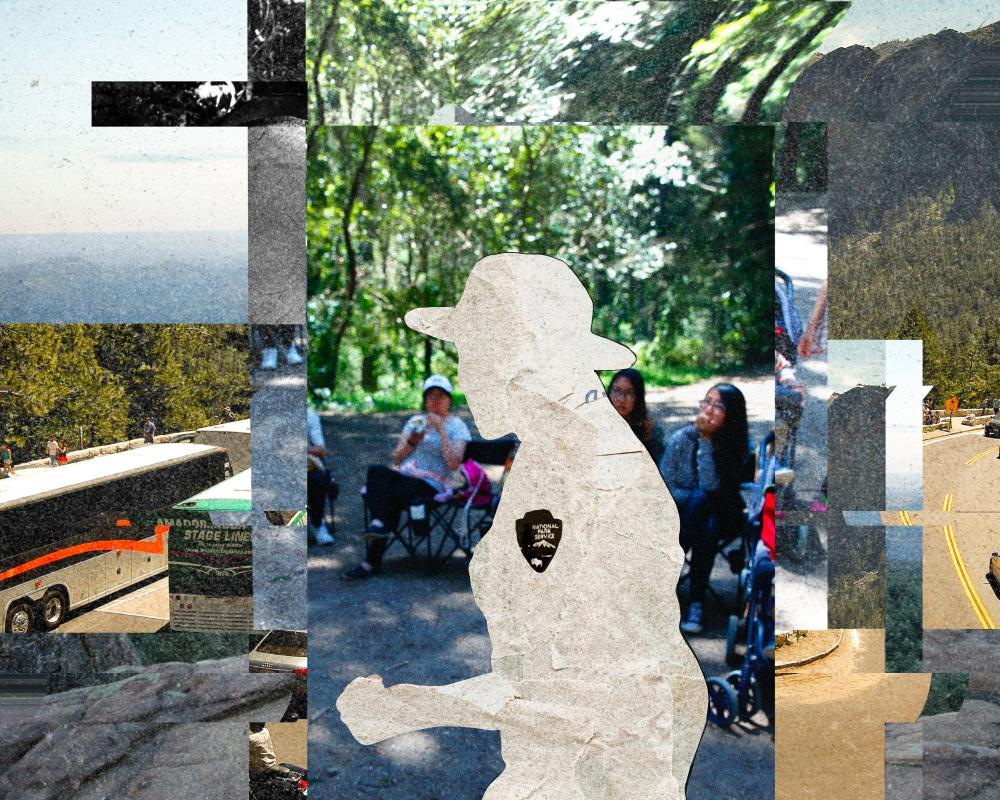Across the US’s fabled but overstretched national parks, unusual scenes are playing out this summer following budget cuts by Donald Trump’s administration. Archeologists are staffing ticket booths, ecologists are covering visitor centers and the superintendents of parks are even cleaning the toilets.
The National Park Service (NPS), responsible for maintaining cherished wildernesses and sites of cultural importance from Yellowstone to the Statue of Liberty, has lost a quarter of its permanent staff since Trump took office in January, with the administration seeking to gut the service’s budget by a third.
But the administration has also ordered parks to remain open and accessible to the public, meaning the NPS has had to scramble remaining staff into public-facing roles to maintain appearances to the crowds of visitors. This has meant much of the behind-the-scenes work to protect endangered species, battle invasive plants, fix crumbling infrastructure or plan for the future needs of the US’s trove of natural wonders has been jettisoned.
“It’s nearly impossible to do the leadership role expected of me,” said one superintendent who heads a park in the western US who didn’t want to be named for fear of retribution from the administration.
“I’m doing everything now. That means I regularly have to make sure the doors are open, I have to run the visitor center, I have to clean the bathrooms. I’d say I’m cleaning the bathroom on a weekly basis now because there’s no one else to do it.”
This sort of triage situation is occurring across the 433 sites and 85m acres – including 63 national parks and an array of battlefields, monuments and cultural sites – that make up the national park system in the US, multiple current and former NPS staff have told the Guardian, risking long-term degradation of prized parks.
“It’s frustrating to realize you can’t execute your talents to be the best steward of these public resources because we are just trying to keep the parks open. We are just in survival mode,” said the park superintendent, who added that they are considering leaving the NPS; under Trump, more than 100 park superintendents have already departed the service.
“For the public, it’s hard to understand. People will say: ‘Why would you mess with national parks? They were doing just fine, they are America’s best idea. Why would you mess with them?’”
In one of his first actions as president, Trump slashed the NPS workforce by 1,000 people, an action known as the “Valentine’s Day massacre” at the agency, as part of a broader effort to shrink the federal workforce. Thousands of others have left the park service since this cull via early retirements or resignations, while some of those who remain have organized as “resistance rangers”, even launching an anonymous podcast.
Doug Burgum, Trump’s secretary of the interior, has said that the agency can be slimmed down while still maintaining services such as campgrounds, bathrooms and visitor centers. “I want more people in the parks, whether they’re driving a snowplow in the wintertime or whether they’re working with [an] interpreter in the summertime or they’re doing trail work,” Burgum told a Senate hearing in June. “I want more of that. I want less overhead.”
But even as staff are pressed into frontline roles, gaps are appearing that critics say can endanger safety. All 13 lifeguard positions are vacant at the Assateague Island national seashore in Maryland and Virginia, according to advocacy group the National Parks Conservation Association (NPCA), a site where a man drowned last week.
Understaffing encompasses more than 50 vacancies including senior leadership roles across three national park sites in Boston, the loss of 60 staff from regional NPS offices in Alaska and the departure of half of all employees from the Big Bend national park in Texas, according to the NPCA.
A history center at Yosemite was forced to close after several artifacts were stolen, a symptom of low staffing, according to the association. It said about 4,000 staff have left in total, nearly a quarter of the total NPS workforce, with potential further cuts if the administration pushes ahead with mass firings, called a reduction in force.
“Some parks have lost as much as a third of their staff and it’s difficult or impossible to keep frontline visitor services when that happens,” said John Garder, a senior director at NPCA. Garder said some parks have shortened visitor center hours, with long lines at entrance gates and cuts to tasks that mostly occur out of sight from tourists, such as law enforcement, archeological and ecological work.
“This is not sustainable in the short term and certainly not in the long term as visitors start to notice the lack of maintenance and work on landscapes,” Garder said.
“What is important to visitors is healthy ecosystems and cultural landscapes, whereas this administration sees these places more like theme parks than national parks. It’s a Potemkin village scenario where the public can’t see things falling apart behind the scenes.”
One current NPS employee who works at Yosemite said that law enforcement is now so overstretched that “people can wreck the park with no consequence” and that visitors are doing potentially dangerous things such as not properly storing their food.
“That’s an issue because we have bears here and we don’t want bears eating people food because they can get aggressive,” the staffer said.
“I worry the park will degrade to the point where safety is a problem. I don’t think visitors notice yet but they will soon. We are all doing jobs outside the scope of our roles. People are stepping up to fill the gaps but everyone is on the fast track to burnout.”
The Trump administration has imposed a hiring freeze upon the NPS but has allowed for nearly 8,000 seasonal hires, although barely half of this total has been achieved before the summer peak. Last year, a record 331m visits were made to national parks – a record – and a new high mark may be reached again in 2025.
“We’ve successfully hired thousands of seasonals and in most parks, staffing is on par with last year,” an NPS spokesperson said.
“As in other years, we are working hard to make it another great year for visitors. Our employees are hard-working, experienced problem-solvers and it’s not unusual for them to adapt to changing conditions.”
“It’s not unusual or unique to this year for national park employees to work around obstacles to ensure we provide memorable experiences,” the spokesperson added about the superintendent cleaning toilets. “Rangers have always worn multiple hats.”
The spokesperson added that lifeguard shortages such as at Assateague “are a nationwide concern even outside of our public lands” and said it was important for people to understand the risks of riptides.
A focus on seasonal roles and public-facing positions threatens to reorient national parks to being mere facades for tourists rather than sustainable, ecologically rich places connected to local communities, some park staff warned.
“Keeping these iconic places open is an ongoing process of protection, preservation and maintenance and it’s scary and chilling to think about that being eliminated along with future planning,” said Marisa, who was an NPS employee of a regional support office until last month and did not want to give her full name.
“The push is to keep up this facade for visitors that things are normal but that’s not the case. There’s a targeting of the functions that sustain the agency.”
National parks, widely beloved by the American public and long seen as a rare bastion of bipartisanship in a fractured country, have also been dragged into the culture wars by the Trump administration. Signs have been erected in each of the parks asking visitors to report any materials that are “negative about either past or living Americans or that fail to emphasize the beauty, grandeur and abundance of landscapes and other natural features”.
The NPS will be reviewing signage from this public feedback and targeting “interpretive materials that disproportionately emphasize negative aspects of US history or historical figures”, an agency spokesperson said.
However, park staff have said many of the responses, sent via a QR code on the signs, suggest the public is reluctant to scrub away uncomfortable truths such as the US’s legacy of slavery or mistreatment of tribal people.
“Are we such weak, fragile people that we can’t view the full length and breadth of our history?” reads one of the responses from a visitor to Muir Woods, California, and seen by the Guardian. “Are we so afraid that we have to hide factual history from the telling of our past? Oh, please!!”
Further, albeit milder, pushback is coming from Congress. While the White House’s suggested budget for next year demands a 30% cut in NPS funding, a reduction that would decimate many of the agency’s core functions, Republicans in Congress have been more circumspect, drafting proposals that would trim the budget by far less.
“There is deep concern among the public about what’s happening to our national parks,” Garder said. “There is concern in Congress, too, although more needs to be done to restore staffing levels and prevent the selloff of federal land.”
But even if further steep cuts are averted and parks cope with this summer’s crush of visitors, lasting damage may have already been inflicted upon America’s best idea. “This is not a normal situation,” said Kevin Heatley, who resigned as superintendent of Oregon’s Crater Lake national park in June due to staff losses. “This is a paradigm shift that is having repercussions that will last for at least a generation.”

